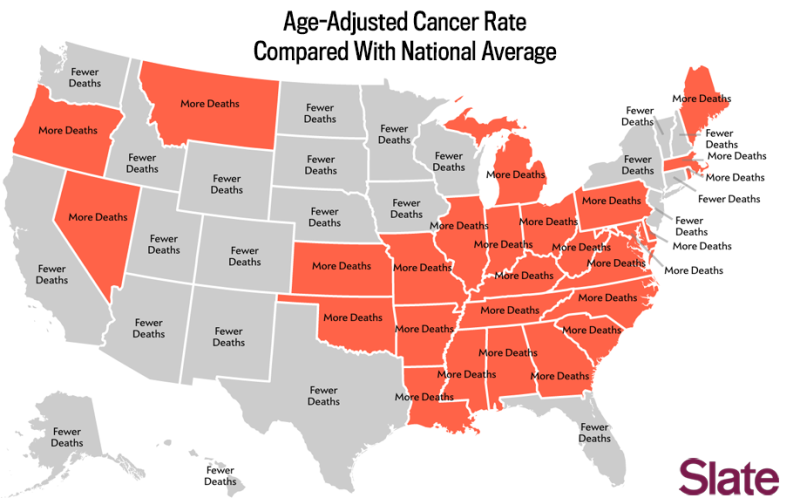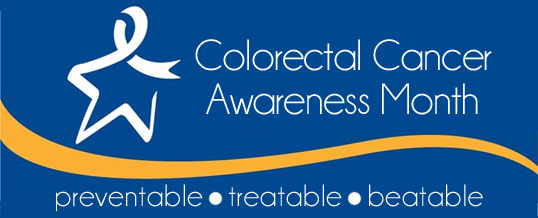This year, there will be about 1.7 million new cases of cancer diagnosed in the United States. Over half a million deaths will result from cancer overall.
Where does your state rank when it comes to cancer death rates? Where do you think the worst chances of surviving cancer are in our country?
Is it the states with the biggest cities and pollution? Or is it the sunny states out west because of skin cancer rates?
Nope! The highest death rates from cancer are in the South! Kentucky had the dubious distinction of being number one. The death rate from cancer in Kentucky is a whopping 500+ people per 100,000.
Kentucky is followed closely by Louisiana, Missouri and West Virginia.
When it comes to lowest death rates, Utah, Arizona, New Mexico, Colorado and Nevada win big! If you’re diagnosed with cancer in one of these states you are much more likely to survive. These Western states have a death rate of about 380 per 100,000, the lowest in the country.
Why this big disparity between states?
Two big reasons affect our chances of beating cancer: how healthy an individual is to begin with PLUS the kind of healthcare one has access to.
Southern states are notoriously high in obesity. That makes them more likely to have co morbidities that make recovering from cancer more difficult. Diabetes, heart disease, a sedentary lifestyle and other obesity related factors are higher in these southern states.
The South has some of our countries highest smoking rates. In fact, the states with highest smoking rates overlap almost completely with the highest rates of cancer, heart disease, and early death. This is obviously not a coincidence.
In contrast, the western states have residents with more active lifestyles, with some of the lowest obesity rates in the country. Hence lower rates of heart disease and other obesity-related diseases.
West coast folks are also less likely to smoke and more likely to eat well.
What about healthcare?
Unfortunately the south has some of the highest rates of poverty. Poverty means less access to healthcare and education about health; this translates into poor prevention and less early detection.
Poor screening and detection of cancers in poorer states makes those with a cancer diagnosis less likely to survive. This is a sad fact in United States but a true one.
Once diagnosed, if you don’t have treatment options or abilities to research treatment options you are behind in the game. Poverty stricken people are less likely to get a second opinion and know their alternatives.
Western US states have some of the best healthcare in the country, with access to treatments available across many income levels. Arizona is consistently on the “Best places to retire” lists partly because of their top-notch healthcare system.
Not to beat a dead horse, but better healthcare means better education about prevention, and earlier detection of cancer! This is the scariest example of the “haves” and “ have-nots” growing further apart.
So what do we do with lists like this? Move?
The point of lists like this, I think, is to highlight what needs to change. That means anti-obesity and anti-smoking programs starting early in childhood.
Elementary schools are beginning healthy eating programs and taking time in the classroom to talk about how important physical activity is. The MOVE initiative begun by First Lady Michelle Obama is a perfect example of bringing this to schools. We need to get the message about healthy eating through to kids when they are young, particularly if they aren’t getting the right message at home.
TV ads graphically showing what smoking leads to are great in my opinion. Kids see it just as adults do, and they’re likely to not start smoking in the first place if they’re scared off by such messages.
It may not be impossible, but it is extremely hard to get adults to change bad habits, especially if they’re stuck in poverty. We need to focus on the next generation of Americans, because if they continue on as their parents do, we won’t have the money or resources to help them when they get a cancer diagnosis.
And the statistics show how deadly that can be.
 English
English French
French German
German






